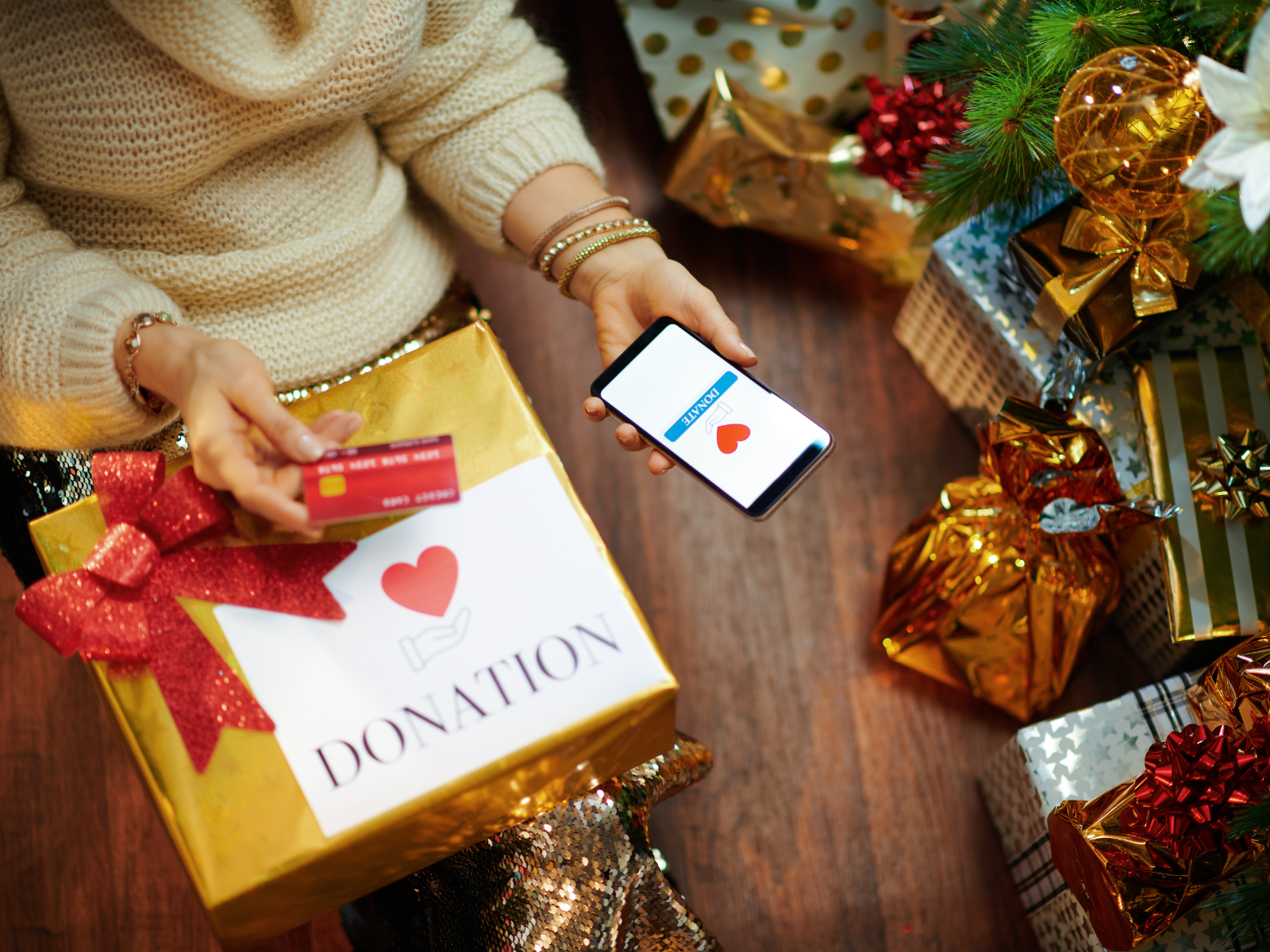How MarTech Can Give Your End-of-Year Fundraising Strategy an Edge


Year-end giving is often the most critical fundraising season for nonprofits. During this time of year, organizations aren’t just competing with the nearly 2 million U.S. nonprofits in operation—they’re also vying for attention against major brands, like Costco and Target, that are running tempting year-end deals for the same dollar. And everyone has the same goal: to finish the year strong.
How does your nonprofit cut through the noise and create a compelling end-of-year (EOY) campaign that meets your fundraising goals? The solution lies in leveraging MarTech — marketing technology – to develop a targeted, data-driven approach that resonates with your donors (tip: your MarTech includes your fundraising technology).
The Problem: Navigating a Crowded Fundraising Landscape
The end-of-year landscape is crowded. Americans spend over $500 billion in the retail space every December. In that same month last year, consumers donated $3.1 billion on Giving Tuesday and many nonprofits raised 1/3rd of their annual revenue.
Today’s donors are savvy consumers–they increasingly expect the same level of personalization and valuable engagement from nonprofits as they experience from their favorite brands. This is because the best brands are capitalizing on relationship investment with these consumers. Your donors want to experience that relationship investment from you too.
How does your organization communicate with each donor to make them feel as if you’re talking to them personally? How do you send an appeal to a donor at the right time and in a manner that will resonate with them?
Don’t fret. There is a cost and time-efficient method to navigate this crowded landscape and ensure your EOY campaign is a success.
The Solution: Segmentation for Personalization
As you start to plan your EOY campaign, you may find yourself unsure of where to start. You could have found your way to this article by searching “EOY fundraising strategies for nonprofits” as you look ahead and know a one-size-fits-all approach won’t cut it.
MarTech is a powerful stack of tools for creating personalized appeals that speak directly to your supporters’ interest, giving preferences, and behavior with your mission. Your MarTech stack is a goldmine of potential, rich with data on current, lapsed, and prospective donors and their giving behaviors. It’s likely you also have donor behavior data in your analytics and email marketing platforms.
Segmentation is the most effective way to start personalizing your EOY campaign. Divide your overall audience into distinct groups based on user-centric and donor recency behavior–user interests, types of content they respond to, the channel(s) they engage with, average annual giving, to name a few. Now, you can tailor your messaging across channels to your donors to reflect the unique relationship you’ve built with them, individually. This personalization makes your appeals more meaningful to each donor, boosting engagement and conversion rates. In fact, highly segmented lists have shown to triple revenue and double email click-through rates.
The next question is: how does your organization actually turn this data into a segmentation strategy?
Actionable Tips for Implementing Segmentation in Your EOY Strategy
Here are some actionable steps to get started on segmenting your audience for your EOY campaign.
Set Clear EOY Objectives
Before getting into segmentation, you’ll need to identify what you want to achieve with your EOY campaign. Are you aiming to increase donation amounts? Re-engage lapsed donors? Strengthen overall engagement? The way you define your objectives will inform how you segment your audience. For example, if one of your objectives is to increase the average donation amount, focus on high-value donors and tailor your messaging to highlight the impact of larger gifts.
Gather and Clean Your Donor Data
Ensure you have up-to-date information on your donors, including donation history, email engagement (opens and clicks), and preferences. Regularly remove duplicates, correct errors, and update outdated information. Clean data is essential for accurate segmentation and helps you avoid sending irrelevant messages.
Identify Key Segmentation Criteria
We find the most persuasive donor segments are built from data on:
- Donation History: Past giving behavior, such as frequency (regular vs. one-time donors), recency (donated last year vs. not recently), and amount (high-value vs. smaller contributors).
- User Behavior: Which donors are active subscribers, frequently clicking your emails and visiting your website? Who is digitally unengaged, but consistently contributes? And who is digitally engaged, but a lapsed donor?
- Demographics and Interests: Age, location, and specific interests. Do donors support certain programs or causes at your organization? Do they give consistently to specific types of appeals? If your nonprofit is national, you’ll also want to consider if you’re speaking to distinct communities appropriately.
Craft Segment-Specific Content
Do you speak to each donor the same way when you meet with them one-on-one? No, of course not. Segmentation allows you to more closely mirror that one-on-one human interaction digitally.
Writing compelling messages is easier when you have clear donor personas that reflect different segments. Personas capture what motivates similar donors, which inspires engaging content. For high-value donors, you might focus on the impact of their contributions and offer exclusive insights. For lapsed donors, share stories of what their past support has enabled and why their continued involvement is vital. Last-minute donors might respond better to urgent appeals and social media countdowns, while planned givers may prefer reminders about donor advised funds or legacy giving options.
Conditional content is a useful feature that pulls from your MarTech data to customize your communications, delivering personalized user experiences based on specific criteria. When segmenting your audience, aim to apply 3 or more conditions. We find data points from donation history, demographics, and interests will most effectively conditionalize the content in your communications and key landing pages to increase conversions. Keep in mind that you only need to deploy conditional content to generate variations of messaging that need to be personalized to activate your donors.
Conclusion: Make MarTech Your Fundraising Strategy for EOY Success
It’s essential for organizations to move beyond ineffective blanket approaches to EOY campaigns. By embracing MarTech’s segmentation and personalization capabilities, you can create a standout campaign that genuinely connects with donors on a deeper level, making them feel understood and valued. This approach will set your organization up for lasting fundraising success well beyond the year-end season.
Let us know how your EOY campaign planning is going. Contact us to explore how we can help you use MarTech to create a segmentation and personalization strategy that will make this December your best fundraising season yet.
Other Resources
Thanks! You’ll hear back within 48 business hours
In the meantime, why not check out our latest case study?

Whether you need help with a project, want to learn more about us, or just want to say hi, you’ve come to the right place.







